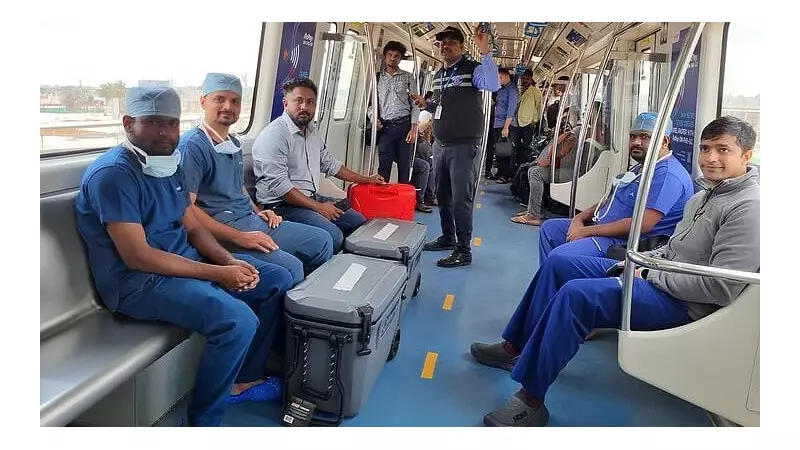
In an extraordinary demonstration of urban infrastructure supporting life-saving medical procedures, Bengaluru's Metro system has once again proven its vital role beyond daily commuting. A pair of lungs traveled approximately 33 kilometers through the city's efficient transit network, marking another successful organ transport via the Namma Metro.
The Race Against Time
The precious cargo, carefully preserved in specialized medical containers, embarked on its crucial journey from the city's outskirts to a waiting recipient at a major hospital. Medical teams coordinated seamlessly with metro authorities to ensure the smooth transit of the organs, which have a critically limited preservation window.
Green Corridor 2.0: Metro Edition
This innovative approach to organ transportation represents what could be termed as 'Green Corridor 2.0' - leveraging existing public infrastructure to bypass Bengaluru's notorious traffic congestion. The metro system provided a reliable, time-efficient alternative to road transport, potentially saving precious minutes that could determine the success of the transplant procedure.
Building on Previous Success
This isn't the first time Bengaluru Metro has facilitated organ transport. The system has previously been used for similar medical emergencies, establishing a pattern of collaboration between healthcare providers and urban transit authorities. Each successful transport strengthens the case for institutionalizing such emergency medical protocols within public transportation systems.
The Human Element
Behind the logistical achievement lies a story of hope - for the recipient awaiting a second chance at life, and for the donor family whose tragic loss transformed into an opportunity to save others. The successful transport represents the culmination of multiple coordinated efforts: from medical teams to metro staff, all working in harmony toward a common humanitarian goal.
This incident underscores how urban infrastructure, when creatively utilized, can serve purposes beyond their original design, potentially saving lives in India's rapidly growing metropolitan centers where traffic congestion often poses significant challenges to emergency medical services.





